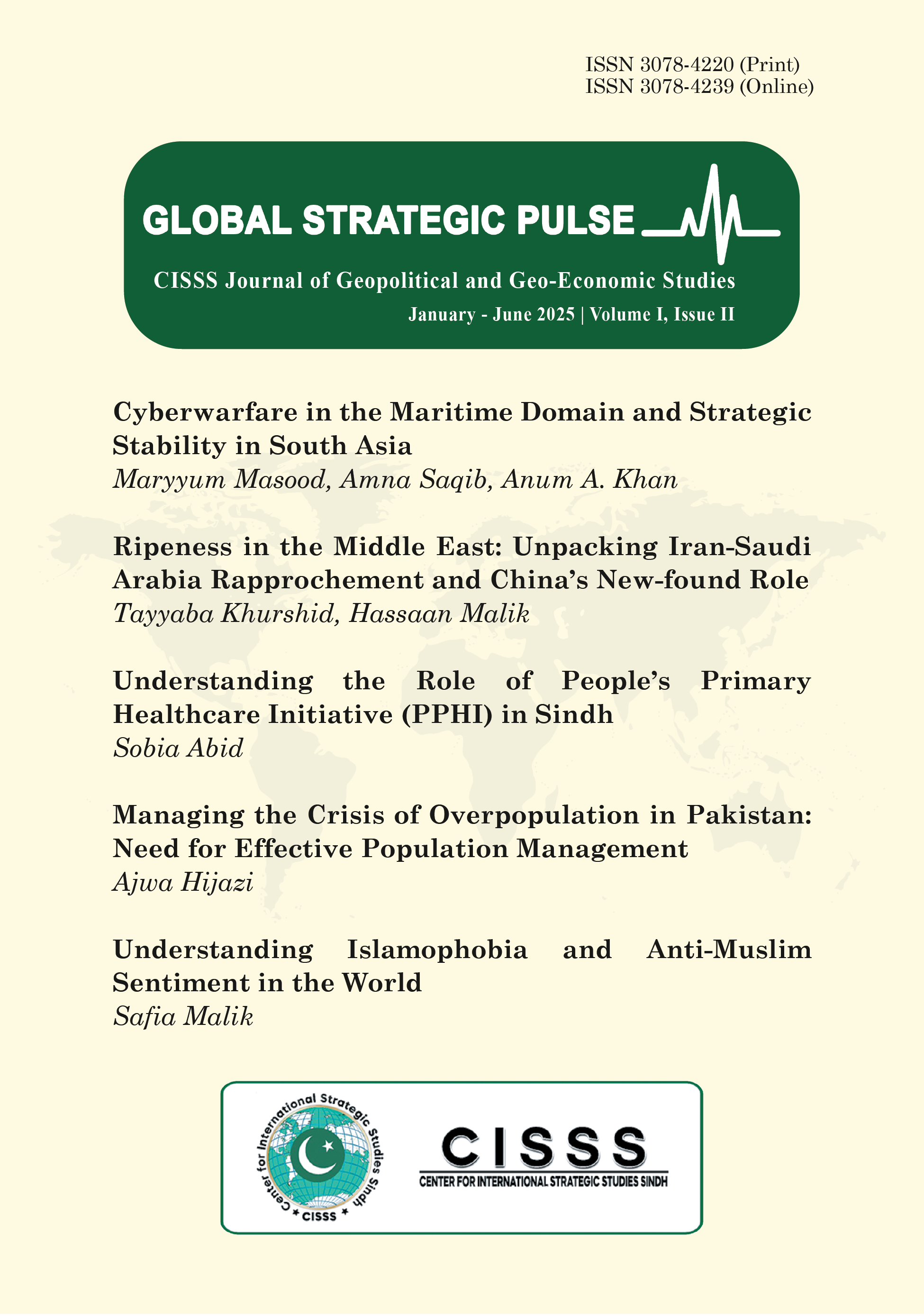Cyberwarfare in the Maritime Domain: A New Front in Naval Conflicts
Keywords:
Cybersecurity, Cyberwarfare, Offensive and Defensive Cyber Space Operations (OCO and DCO), National Security, South AsiaAbstract
The maritime domain – a hub of global trade, communication, and national security – is emerging as an important theater in the evolving landscape of cyberwarfare. With its increasing reliance on interconnected digital systems, this sector encompasses risks to both commercial and military operations, with attacks capable of disrupting supply chains, compromising naval capabilities, and undermining strategic security. This research examines the dual dynamics of Offensive Cyberspace Operations (OCO) and Defensive Cyberspace Operations (DCO), focusing on their potential to escalate into full-scale cyber warfare within the maritime sector, which may inadvertently lead to broader conflicts. Offensive operations, directed at degrading adversarial systems, and defensive operations, focused on safeguarding essential infrastructure, present challenges in managing the strategic balance. This study addresses two key questions: How can offensive and defensive cyberspace operations lead to cyberwarfare in the maritime domain? and how can the risks of inadvertent escalation be mitigated? Through real-world case studies and an analysis of the evolving cyber capabilities of key global actors, this research highlights the vulnerabilities inherent in maritime systems and the far-reaching geopolitical risks of cyber conflicts in complex regions like South Asia. To mitigate these threats, this paper advocates for adopting a multifaceted approach: integrating advanced technological innovations such as AI-driven threat detection and quantum-resistant encryption with robust cybersecurity frameworks. It emphasizes the important need for international collaboration, the establishment of clear global norms, and confidence-building measures (CBMs) to prevent escalation and ensure stability in this key domain.

Downloads
Published
Issue
Section
License
Copyright (c) 2025 Maryyum Masood (Author)

This work is licensed under a Creative Commons Attribution 4.0 International License.
All articles are permanently available online to the public without restrictions or subscription fees. All articles are free to be used, cited, and distributed, on condition that appropriate acknowledgement is included. Authors are the copyright holders of their original contributions. The published article is simultaneously licensed under a Creative Commons (CC) Attribution License. “A CC license is used when an author wants to give people the right to share, use, and build upon a work that they have created” Wikipedia.

